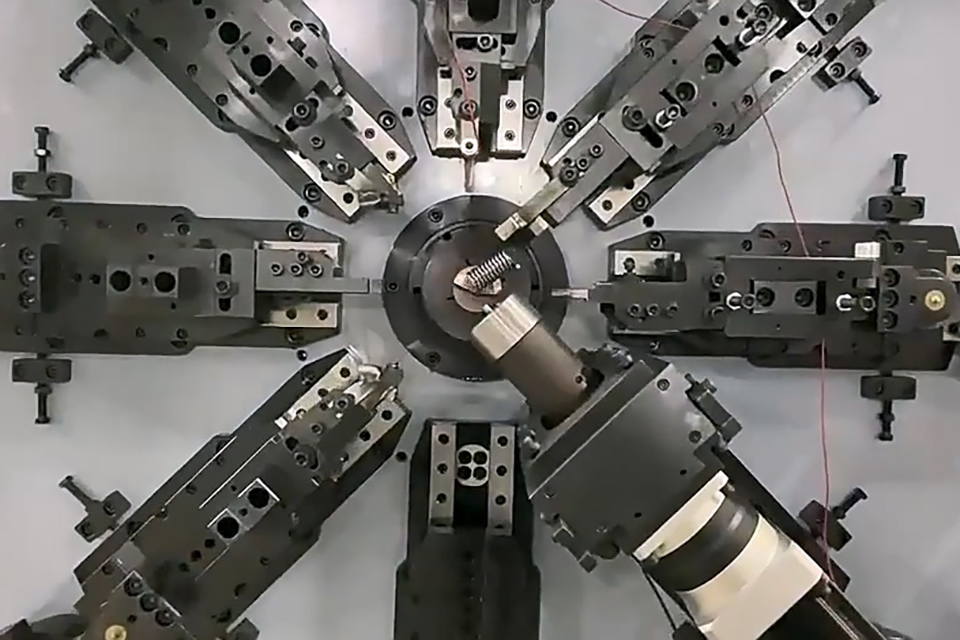1) Raw material preparation stage
Hook spring production begins with high-quality steel wire raw materials. At this stage, the manufacturer first needs to strictly screen and inspect the steel wire to ensure that it meets the production requirements. The steel wire will then be accurately cut by a wire cutting machine to meet the length requirements of different hook springs. The steel wire will then pass through cleaning equipment such as a sandblasting machine or a pickling machine to remove surface oil and impurities, providing clean and uniform raw materials for subsequent processing.
2) Forming stage
Forming is the core step in hook spring production. At this stage, the forming machine uses a high-precision control system and molds to accurately bend the steel wire into the shape of the hook spring according to the preset parameters and procedures. The forming machine can ensure that the size and shape of each hook spring meet the design requirements and have a high degree of consistency and stability.
3) Heat treatment stage
Heat treatment is a key step to improve the performance of the hook spring. At this stage, heat treatment equipment such as heating furnaces and insulation equipment will heat the steel wire to a certain temperature and keep it for a period of time to change its microstructure. Subsequently, it is quickly cooled by a cooling device to give the steel wire the required hardness and elasticity. The heat treatment process can significantly improve the durability, elasticity and fatigue resistance of the hook spring.
4) Surface treatment stage
In order to improve the corrosion resistance and aesthetics of the hook spring, surface treatment is usually performed. At this stage, equipment such as sprayers, electroplating tanks or coating machines will evenly apply a protective layer to the surface of the hook spring. These protective layers can prevent corrosion and wear and increase the service life of the spring. At the same time, surface treatment can also improve the appearance quality of the spring, making it more beautiful and durable.
5) Inspection and Packaging Stage
Quality inspection is an indispensable part of the production process of hook springs. At this stage, various inspection equipment and tools such as microscopes, hardness testers and tensile testers will test the size, shape, hardness and elasticity of the hook springs. Only through strict quality inspection can we ensure that the quality of the hook springs meets the standards and customer requirements. Finally, qualified hook springs will be carefully packaged to prevent damage during transportation and storage, and ready to be shipped to customers.
6) In summary, the production of hook springs is a complex and delicate process that requires a series of professional equipment and technologies to ensure product quality and production efficiency. From raw material preparation to molding, heat treatment, surface treatment, inspection and packaging, each link requires sophisticated equipment and technical support.
